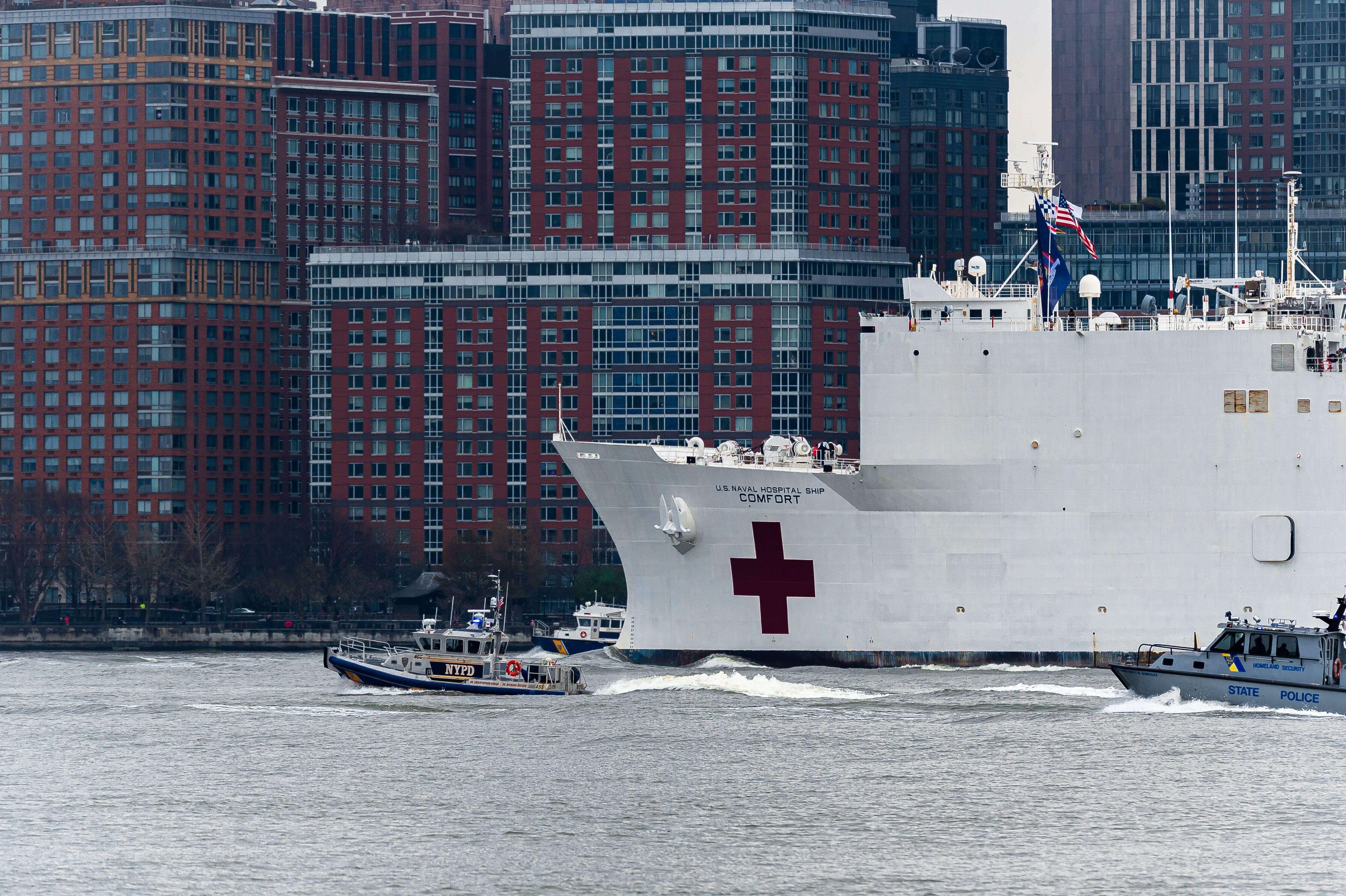The U.S. naval hospital ship Comfort enters the Hudson River en route to serve as a floating hospital for New York City, March 30, 2020.
American government—federal, state, and local—is a system of both shared and exclusive powers. Federalism is the name for this aspect of our constitutional structure—and rarely has it been more evident than in the face of the coronavirus pandemic. The Tenth Amendment of the U.S. Constitution, the crux of the federalist idea, states: “The powers not delegated to the United States by the Constitution, nor prohibited by it to the states, are reserved to the states respectively, or to the people.” The national government has key responsibilities for the protection of the American people, but its delegated (“enumerated”) powers are fewer in regard to public health than those of the states. For this reason, it is governors of various states who have taken the lead in the response to the COVID-19 pandemic, and why those approaches differ. It is state or local orders that are responsible for quarantines, stay-at-home regulations, and lockdowns of various businesses.
The political idea known as “separation of powers” undergirds the division of legislative, executive, and judicial powers of government. Similarly, powers are divided between the national government and the 50 states in our federalist system. Federal powers—as spelled out in the U.S. Constitution—are strongest in areas that involve the nation as a whole: national defense/security, treaty making, international trade, and so on. In contrast, states’ powers exceed those of the federal government when it comes to public health and policing. While the federal government regulates interstate commerce (between states), states regulate most intrastate economic activity (within each state). In the normal course of things, the federal government cannot tell states what to do—and if it attempted to do so, such action would widely be seen as dictatorial.
Federalism thus allows for many decisions to be made closer to the people most affected by them. In such a large and diverse nation as the United States, a “one-size-fits-all” set of social distancing rules would likely be less effective than state-by-state experimentation using different policy approaches. Undoubtedly, the role of the federal government is hugely important in dealing with such an unprecedented crisis, which challenges its very ability to “provide for the common defense” and “promote the general welfare.” Agencies like the Centers for Disease Control and Prevention (CDC) and the Food and Drug Administration (FDA) and cabinet-level departments such as Homeland Security and Health and Human Services were created to exert federal powers. Action—or inaction—by the federal government in a crisis can have outsized influence. And what happens in Washington often receives more attention by the national media.
Image credit: © Sipa USA/Alamy
Related Links:
- What Is Federalism? Definition and How It Works in the US
Basic overview of federalism; includes listing of shared, or concurrent, powers and exclusive powers held by federal and state governments (“Provide for public health and safety” is among “exclusive” state powers).
(Source: ThoughtCo., August 3, 2018) - The Coronavirus Response Shows That Federalism Is Working
Opinion piece from mid-March on how the various responses to the pandemic in the United States express fundamentals of American federalism.
(Source: National Review, March 16, 2020) - Trump’s ‘Corona-Federalism’ Pits States against Each Other. It’s a Disaster
Opinion piece harshly criticizing the way federalism is working under the Trump administration’s handling of the coronavirus pandemic.
(Source: Washington Post, April 8, 2020) - Federalism and the Coronavirus Crisis
Analysis of the practice of federalism in the COVID-19 pandemic from a libertarian viewpoint.
(Source: Reason.com, March 31, 2020) - State & Local Government
Primer on state and local government.
(Source: WhiteHouse.gov; accessed April 13, 2020)




